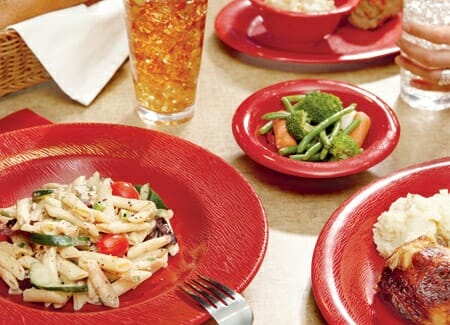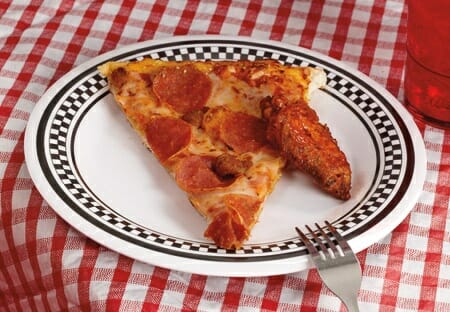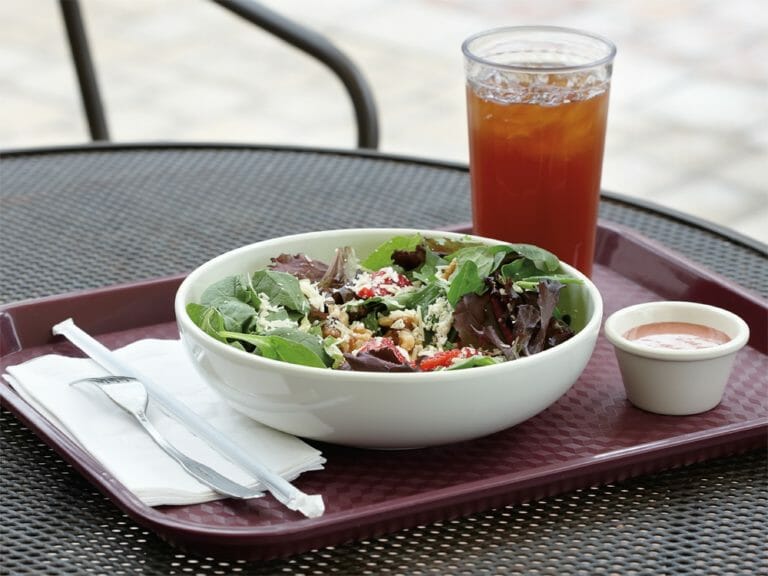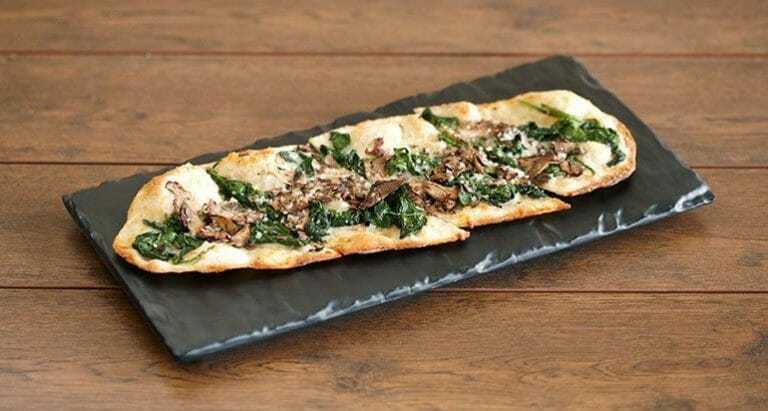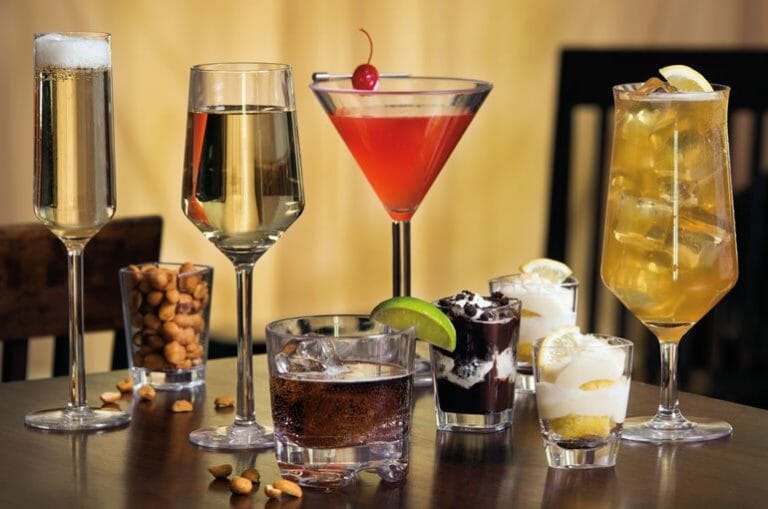Melamine Dinnerware Finishes: Cost and Benefits Comparison
With many options to choose from for selecting a dinnerware finish for your melamine tableware, how do you go about selecting a finish that fits not only your restaurant’s personality, but your operation as well?
In this article, not only will I give you cost comparisons for melamine dinnerware finishes, but I will also discuss the benefits of each finish for different types of operations.
Some of you might be wondering, what is a dinnerware finish and what does it do? A dinnerware finish provides both cosmetic appeal and helps to seal and protect the dinnerware after it’s made. There are numerous options available for melamine dinnerware finishes that include:
- matte
- textured
- etched
- glazed
- non-glazed (highly polished)
- decal (design)
- two-toned
- faux
Let’s further explore the variations of the dinnerware finishes.
Matte, Textured, and Etched
A matte finish is visually appealing and gives dinnerware an earthy yet contemporary look. Some people think that a matte finish will hide fingerprints, scratches, and wear tear, but the truth to be told is a matte finish will make these problems even more visible. If you touch it, you will see it. This is not just true for melamine dinnerware, but for many other dinnerware materials as well.
The benefits of textured and etched dinnerware are that these finishes do hide scratches, fingerprints, and other markings that come with wear and tear. The smooth rounded bumps that are often put into the product will actually add some lift to the food, while separating out the oils and sauces so they don’t clump up at the bottom of your plate. It doesn’t hurt that it’s also visually attractive as well.
A matte or textured product could have an increase in cost of about 25 to 30% compared to a regular non-glazed high polish finish, which varies by product because of the defect rate and production time. With etching, it could be about a 10% to 20% increase in cost–depending on how much etching is being applied and the size of that dinnerware item.
One important thing to remember is that all texture in melamine dinnerware is carved into the mold and will not rub off during handling or dishwashing.
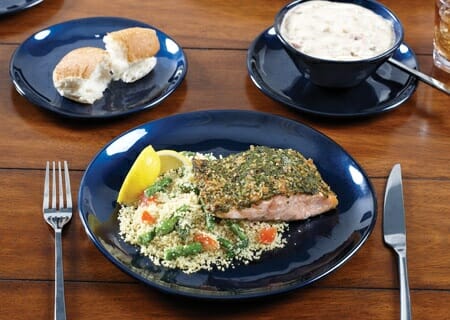
Glaze, Non-Glaze, and Color Glaze
A glaze finish is a coating that gives your dinnerware shine. While the coating is an aesthetic benefit, it also enhances product durability, hides wear and tear, and helps it to resist staining. For a clear glaze finish, there is about a 3 to 10% price increase compared to a non-glazed product. Although a non-glaze finish doesn’t have a coating, per say, it does have a very smooth finish and is very well polished. Because of the durability of melamine, the dinnerware can withstand the rigors of a high volume foodservice operation. A color glaze or a special glaze could be significantly more than just a standard clear glaze ( up to 20 to 30% more). A color glaze has all the benefits of a glaze coating, and at the same time, it gives your dinnerware a creative two-toned look.
Decal
A decal is a sheet of thin paper that is applied on a dish to give dinnerware a creative look. All decaled tableware is protected by a top layer of clear glaze, which secures the decal artwork in place while adding longevity to the dinnerware as well.
The options for decal artwork can be added as a full cover on a product, on the rim of a product, or in the center of a product. The decal can be your restaurant’s logo, name, specialized color or design, and more. Although the decal finish is higher in cost compared to the other finishes (about 20 to 60% compared to a regular clear glazed product), this option is popular because it allows operators to promote their brand’s image.
Two-toned
There are a few ways to achieve a two-toned color look on your dinnerware. One way to achieve this look is through a dual-mold technique. The benefits of a dual-mold product, is having two colors brought together without a decal, which means it has a longer durability life. The product also looks more natural compared to a decal that can sometimes give off an artificial appearance. A dual-mold product costs about 38% more than a decal finish because in most cases the factory has to create an extra “slide mold” for the second color.
As previously, stated, other ways to achieve a two-toned look is to add a color glaze or decal to your dinnerware.
Faux
Faux finishes have become a popular trend within the industry, especially for those operations with a farm-to-table look and feel who still desire melamine durability. The melamine serveware can look like slate, wood, or granite just by applying different finishes together. Cost will vary depending on the techniques used.
{{cta(‘007fd94a-8b3c-4e21-8dc7-f8b01b537c5d’)}}

